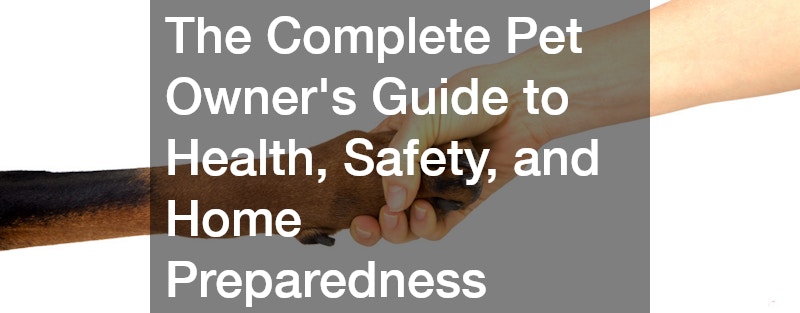Every household with pets quickly learns that caring for them goes far beyond food, water, and love. True responsibility means anticipating emergencies, creating safe environments, and knowing when to seek professional help. This pet owner’s guide focuses on health, safety, and home preparedness, giving practical insights that can help you make the best choices for your furry, feathered, or scaled companions. It explores veterinary care options, home modifications, and preventive measures designed to reduce risks and enhance your pet’s quality of life.
Being prepared ensures that you can act quickly in stressful situations while also maintaining a safe and supportive environment on a daily basis. From medical services to home fencing, every element contributes to the overall safety net you provide for your animals. Many pet owners wait until something goes wrong before making plans, but the smartest approach is proactive. By setting up health resources, identifying reliable care facilities, and ensuring your home is secure, you not only protect your pets but also give yourself peace of mind.
Knowing When to Seek Immediate Care
Every responsible caretaker must be ready to identify the signs that call for an emergency vet. Accidents, sudden illnesses, or unexplained behavioral changes can escalate quickly, making immediate action critical. Some common red flags include labored breathing, persistent vomiting, severe bleeding, or collapse. A pet’s life may depend on rapid transport to a qualified facility where specialized equipment and trained professionals are available to stabilize the situation. Recognizing emergencies before they become life-threatening is essential to good pet care.
This pet owner’s guide emphasizes that being prepared also means knowing the location of nearby facilities, keeping their contact information handy, and understanding their hours of operation. Having a plan ahead of time prevents delays when seconds matter most. Even if you are unsure whether the situation qualifies as a true emergency, it is better to err on the side of caution and contact a professional. Emergencies can happen at any time, and hesitation can cost precious moments.
In addition, you should maintain a simple pet first aid kit at home. Items like bandages, antiseptic wipes, and digital thermometers can help stabilize a pet until veterinary assistance is available. Still, nothing replaces the expertise of a dedicated emergency vet when your pet’s health is on the line.
Exploring Care Options in Your Community
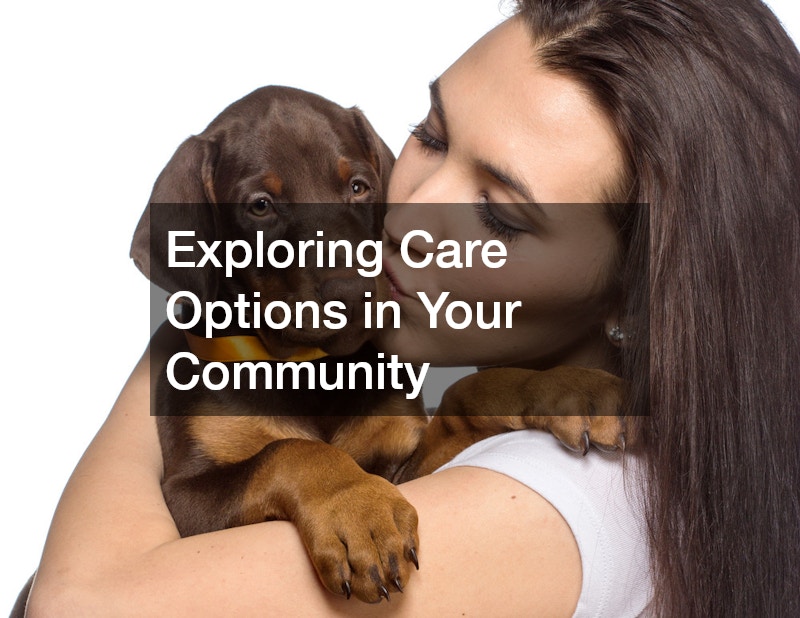
When looking for everyday care, many people start their search with a trusted animal clinic. These facilities often provide a broad range of services, from wellness exams and vaccinations to dental care and diagnostics. For most families, an animal clinic becomes the go-to location for annual checkups and preventative medicine. Establishing a relationship with one of these clinics ensures continuity of care, which is critical when tracking vaccinations, monitoring weight, or managing chronic conditions.
This pet owner’s guide also stresses the importance of familiarity. Pets are less anxious when they visit the same facility regularly and encounter consistent staff members. Clinics are typically staffed with knowledgeable professionals who get to know your pet’s unique needs over time, creating a stronger bond of trust between animal and provider.
Before selecting a clinic, visit in person to evaluate cleanliness, staff attentiveness, and the range of services offered. Many modern clinics also have advanced diagnostic equipment that can catch health issues early. Pricing and payment options should also be transparent, ensuring that there are no surprises. Choosing the right animal clinic sets the foundation for long-term health, helping your pet live a longer, happier life.
Finding Trusted Veterinary Professionals
A common starting point for pet owners is searching for veterinarians near me, especially when moving to a new area or adopting a pet for the first time. Local searches typically yield several options, but it is important to carefully compare qualifications, reviews, and available services. Proximity matters, particularly in emergencies, but quality and reliability should be equally prioritized. The closest clinic may not always be the best, but identifying one that balances accessibility and expertise is key.
This guide advises checking online ratings, talking to neighbors, and visiting facilities directly. Observing how staff interact with both pets and owners provides valuable insight into the level of care you can expect. Veterinarians who explain conditions clearly, offer preventive advice, and communicate openly help build a trusting relationship.
Another factor is specialization. Some veterinarians near me may advertise expertise in exotics, orthopedic care, or behavioral consultations. Matching these strengths to your pet’s needs ensures more tailored care. Ultimately, choosing the right veterinary professional combines location convenience with service excellence, giving you confidence that your pet will receive top-quality attention throughout its life.
Understanding Urgent but Non-Emergency Care
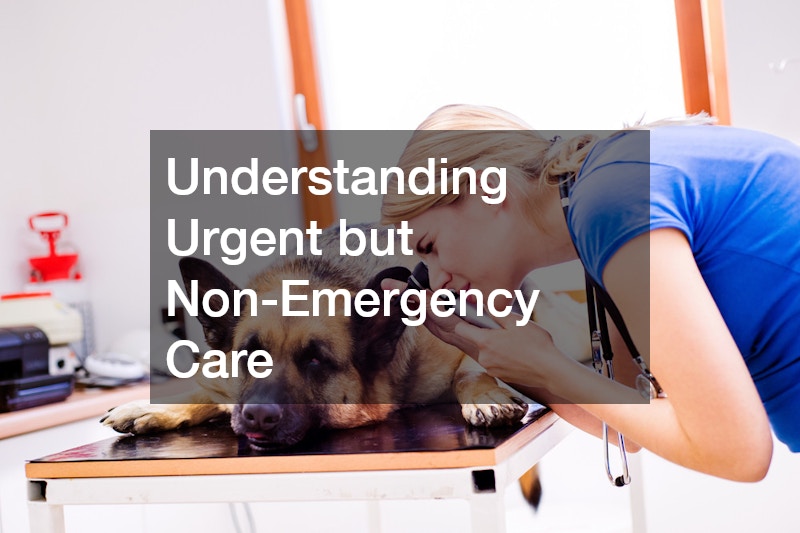
Not every health concern requires a midnight rush, but some issues still need immediate attention through pet urgent care facilities. These centers are designed to handle pressing matters like minor wounds, sudden lameness, ear infections, or gastrointestinal upset. Unlike routine checkups, these visits are unplanned yet not always life-threatening. Pet urgent care bridges the gap, ensuring that problems don’t escalate into emergencies.
This pet owner’s guide highlights the value of knowing when urgent care is appropriate. For example, if your pet suddenly refuses food, develops a skin rash, or experiences limping, these are issues that should not wait for a regular appointment. Having access to a facility that can treat these conditions on the same day saves both stress and potential complications.
Costs may be lower than emergency services, making urgent care an affordable solution for non-critical problems. Many facilities are open evenings and weekends, which adds flexibility for busy families. By keeping track of available urgent care providers in your area, you can ensure that your pets receive timely interventions that prevent worsening health issues and preserve long-term well-being.
Learning About Preventive Procedures
Responsible ownership often includes decisions about procedures such as pet neutering. This surgery reduces unwanted litters and has additional health and behavioral benefits, including lowered risks of certain cancers and reduced roaming tendencies. The procedure is routine, safe, and performed by qualified professionals under anesthesia. Most pets recover quickly with proper post-operative care, returning to normal activity within days.
This guide underscores the importance of discussing timing with your veterinarian. Age, breed, and overall health can influence when neutering is most beneficial. Puppies and kittens are often scheduled at a few months old, but older animals can undergo the procedure as well. Neutering also contributes to reducing the number of homeless pets in shelters, making it a socially responsible decision in addition to a health-related one.
Post-surgery, pets should be monitored for swelling, unusual discharge, or lethargy. Pain management medications are typically prescribed to ease recovery. Limiting activity during healing prevents complications and ensures faster recuperation. By embracing preventive measures like pet neutering, you are not only helping your individual pet but also contributing to broader animal welfare goals.
Navigating End-of-Life Decisions
Few topics are harder for owners to face than the need for pet euthanasia services. However, acknowledging this possibility is part of being a compassionate and responsible caretaker. When a pet is suffering from an incurable illness, chronic pain, or diminished quality of life, euthanasia may be the most humane option. It provides a peaceful, painless end, sparing animals from prolonged discomfort.
This pet owner’s guide encourages open conversations with veterinarians about timing, methods, and emotional considerations. Professionals can assess a pet’s health objectively and advise whether palliative care is still viable. Understanding the process ahead of time helps ease the emotional burden when the moment arrives.
Many clinics offer in-home euthanasia, allowing pets to remain in familiar surroundings surrounded by loved ones. Others provide quiet spaces in their facilities for privacy and support. Bereavement resources and counseling are often available to help owners cope with grief. While no guide can eliminate the sadness of losing a beloved companion, being prepared ensures that decisions are guided by compassion, dignity, and love rather than panic or guilt.
Planning for Safe Transportation
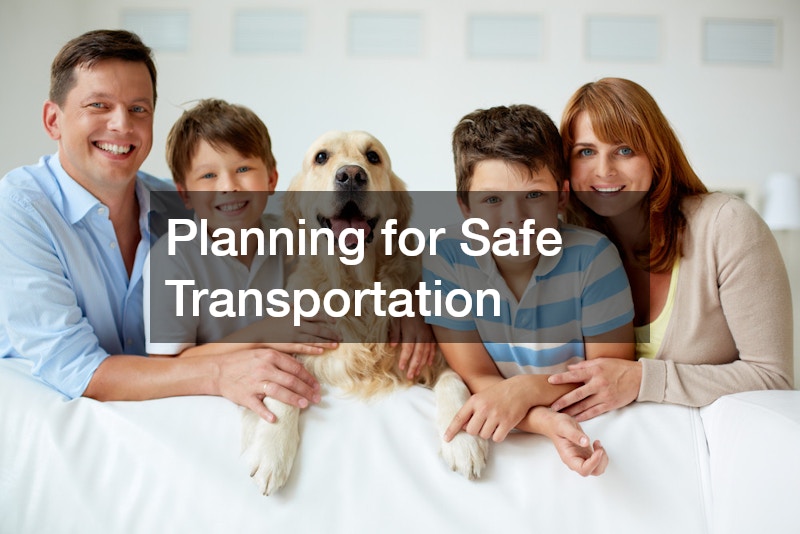 v
v
Whether for routine visits, emergencies, or cross-country moves, safe pet transportation is a necessity. Crates, carriers, and harnesses provide security during travel, reducing stress for both pets and owners. For longer journeys, hydration, ventilation, and comfort must be carefully considered. Specialized companies also offer transport services that accommodate pets of all sizes, ensuring compliance with airline or state regulations.
This pet owner’s guide stresses the importance of preparation. Start by familiarizing your pet with carriers gradually, making them a comfortable space rather than a source of fear. Short trips before longer ones can also help reduce anxiety. Documentation, vaccination records, and health certificates may be required for interstate or international travel, so keeping these organized saves time.
For vehicle travel, pets should never ride unrestrained in the front seat, as airbags can cause injury. Instead, secure them in the back using appropriate carriers or seat belt harnesses. By approaching pet transportation with careful planning and proper equipment, you minimize risks while making every journey smoother and safer.
Building Relationships With Local Professionals
Relying on local veterinarians offers distinct advantages compared to large corporate chains. These professionals are deeply connected to their communities and often prioritize long-term relationships over transactional encounters. Local veterinarians typically know their clients by name, creating a sense of trust and familiarity that benefits both pets and owners.
This guide points out that smaller practices may also provide greater flexibility in scheduling and personalized treatment plans. Because they depend on community reputation, local professionals often go above and beyond to ensure satisfaction. Their commitment extends beyond medical care, as they frequently participate in community events, adoption fairs, and educational outreach programs.
Choosing local veterinarians supports your neighborhood economy while ensuring continuity of care. Pets often feel calmer in environments where they have established familiarity, reducing anxiety during visits. Whether for wellness exams, specialized treatment, or ongoing preventive care, cultivating a strong relationship with a nearby professional adds stability and reliability to your pet care strategy.
Creating Safe Outdoor Spaces
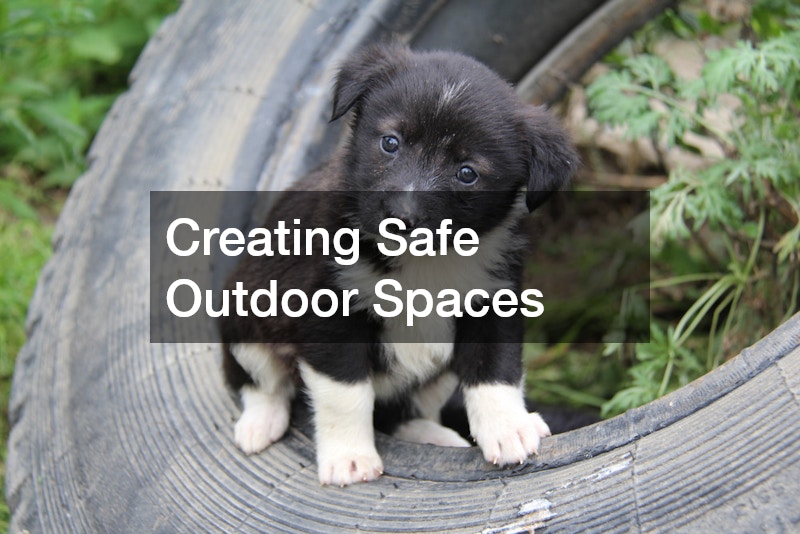
Health and safety extend beyond veterinary care into the physical environments pets inhabit. Secure yards are essential for preventing escapes, deterring wildlife encounters, and giving pets room to exercise safely. One of the most effective strategies for creating safe spaces is thoughtful fence installation. Whether wood, vinyl, or metal, a proper fence keeps pets in while keeping hazards out.
This pet owner’s guide emphasizes that fence height, material durability, and gate security should be tailored to your pet’s size and activity level. Larger dogs may require taller, reinforced fences, while smaller breeds may need protection against digging or squeezing through gaps. Regular inspections ensure that fences remain secure over time, preventing accidents or escapes.
Professional installation often guarantees durability and compliance with local codes, but DIY solutions are also possible with the right tools and planning. Investing in fencing not only provides peace of mind but also allows pets to enjoy outdoor exercise safely. A well-designed yard becomes an extension of your home, enriching your pet’s daily routine while reducing risks.
Choosing the Right Materials for Security
For many households, the most practical and cost-effective solution involves working with chain link fence companies. Chain link fencing is durable, customizable, and relatively affordable, making it ideal for large yards or multi-pet households. These fences can be adjusted in height and coated in protective finishes to enhance longevity and reduce rust.
This pet owner’s guide highlights the functional advantages of chain link. Unlike solid fences, chain link provides visibility, allowing pets to see their surroundings without feeling enclosed. It also offers flexibility in design, with options for gates, privacy slats, or reinforced bottoms to deter digging. Chain link fence companies can tailor installations to suit your specific needs, ensuring that the enclosure matches your yard layout and pet size.
Although some owners may prefer more decorative fencing, chain link remains a strong contender for practicality and effectiveness. When properly installed and maintained, it offers years of reliable service. Consulting professionals ensures safety standards are met, creating an outdoor space where pets can explore freely while remaining secure.
Caring for pets requires more than affection—it demands foresight, preparation, and thoughtful decision-making. This pet owner’s guide has outlined essential considerations, from emergency medical resources to home fencing solutions. By integrating veterinary care, preventive measures, safe transport, and secure living environments, you create a comprehensive framework that protects your animals in every circumstance.
Remember that being a responsible caretaker involves not only addressing problems as they arise but also taking proactive steps to prevent them. With the right knowledge and resources, you can ensure that your pets live healthier, safer, and more fulfilling lives. Investing time into preparation pays off in peace of mind, knowing you are equipped to handle emergencies and provide everyday comfort. Above all, this pet owner’s guide is a reminder that the best gift you can give your companion is a life filled with security, wellness, and love.

